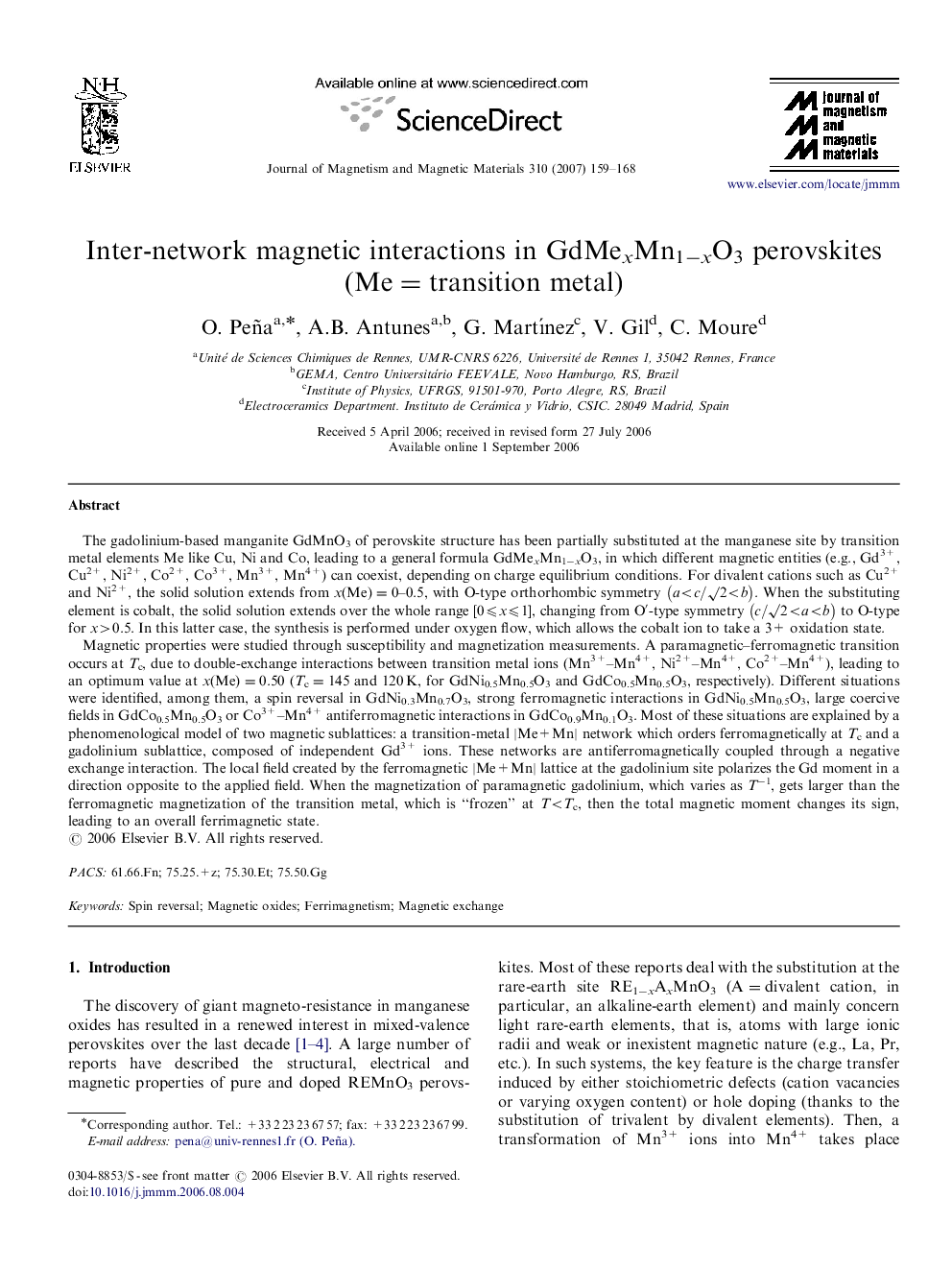| کد مقاله | کد نشریه | سال انتشار | مقاله انگلیسی | نسخه تمام متن |
|---|---|---|---|---|
| 1804681 | 1024652 | 2007 | 10 صفحه PDF | دانلود رایگان |

The gadolinium-based manganite GdMnO3 of perovskite structure has been partially substituted at the manganese site by transition metal elements Me like Cu, Ni and Co, leading to a general formula GdMexMn1−xO3, in which different magnetic entities (e.g., Gd3+, Cu2+, Ni2+, Co2+, Co3+, Mn3+, Mn4+) can coexist, depending on charge equilibrium conditions. For divalent cations such as Cu2+ and Ni2+, the solid solution extends from x (Me)=0–0.5, with O-type orthorhombic symmetry (a
Journal: Journal of Magnetism and Magnetic Materials - Volume 310, Issue 1, March 2007, Pages 159–168